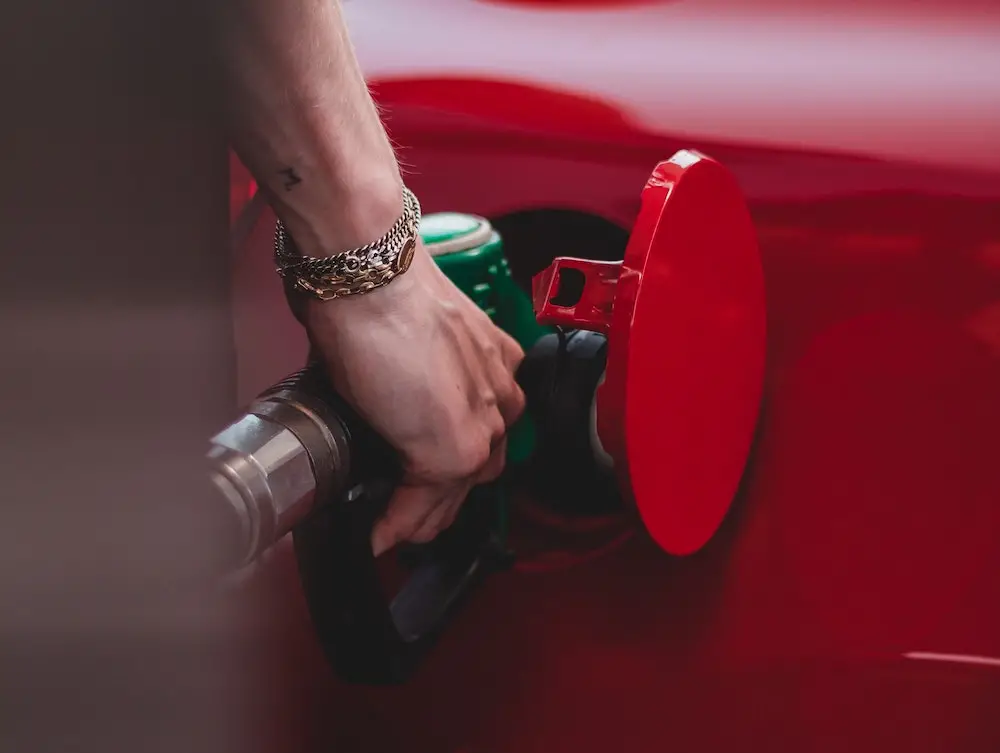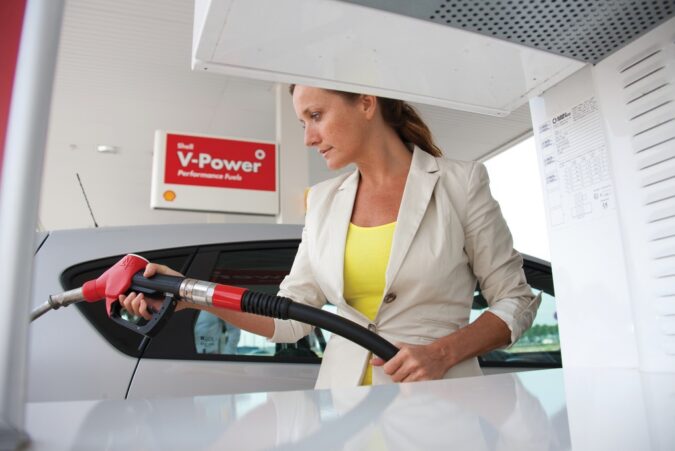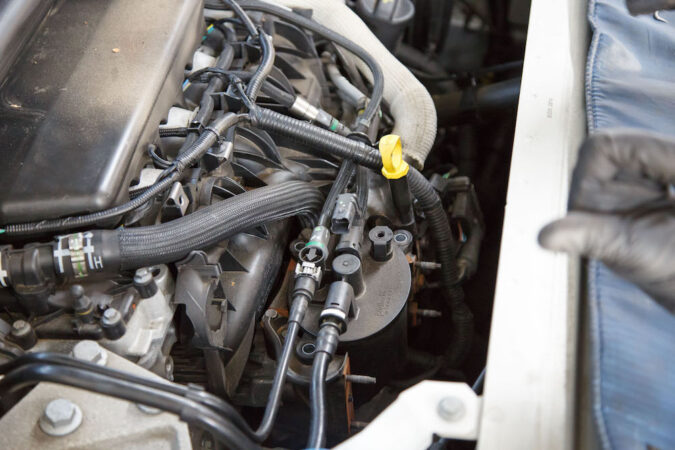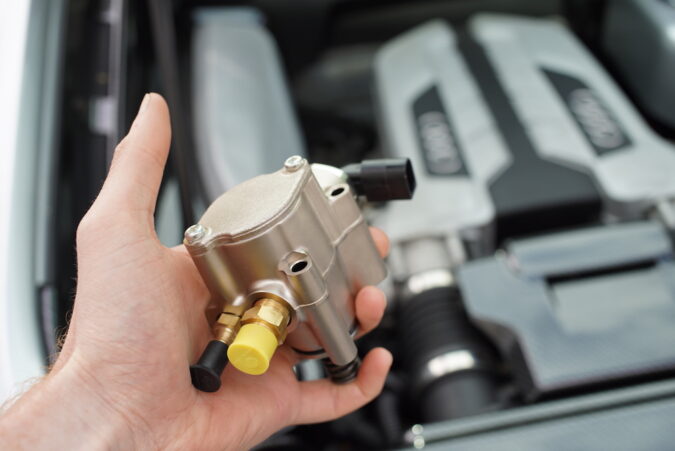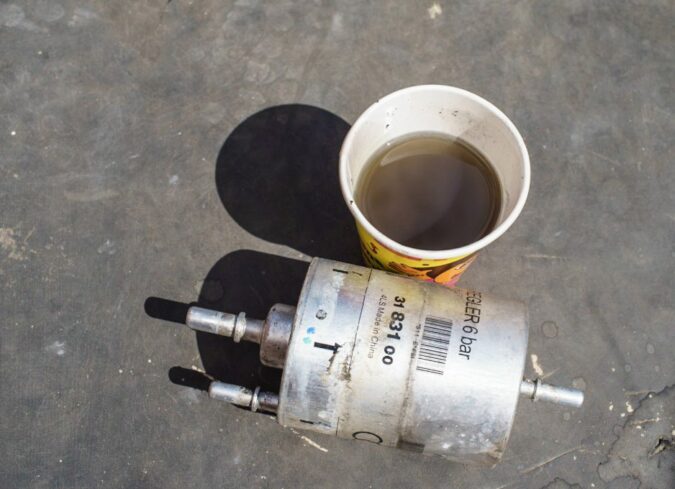Numerous types of fuel exist in the market today, which you can use in automobiles. We resorted to some of them to control the environmental pollution resulting from petrol and gas. The need for automobile fuel remains high despite the growing demand for electric cars (though there are hidden costs of owning an electric car).
There are several ways of fueling an automobile, considering the various types of fuel available. Whether or not you’ll use gasoline, petrol, or alternative fuels depends on the design of your car’s engine. You can’t use the wrong fuel and expect the engine to kick off.
Over a dozen different types of alternative fuels are now being produced or developed for use in cars with internal combustion engines and high-tech automobiles. In the United States, we consider any fuel variant other than petrol (aka gas) and diesel as an alternative fuel.
While your car may not be designed by default to operate with any of these alternatives, you can make them work with it. All you need may just be a little fixing or swapping parts to get them to work. Alternative fuels will help save money on gasoline and reduce air pollution. This article will show you some of the most popular types of fuel that you can use in your vehicle.
- Common Types of Fuel
- The Fuel injection System
- Types of Fuel Injection System
- Components of a Fuel Injection
- Final Thoughts
- FAQs
Types Of Fuel For Cars
Types Of Fuel #1 – Petrol Or Gasoline
Most vehicles run on petrol, sometimes referred to as regular gasoline. It is available in various configurations and is used in internal combustion engines that utilize spark ignition.
The gasoline demand, which is produced by refining around 45 percent of each barrel of crude oil, is the highest; compared to the demand for any other kind of automobile fuel. The octane rating quantifies the gasoline’s capacity to withstand compression without igniting as the fuel is being heated.
Most countries in Europe and beyond adopt the RON (Research Octane No.) as the preferred method of measuring octane content. It is common to see the average of the MON and RON posted at gas stations in nations like the United States, Canada, Brazil, and others.
Throughout the United States, unleaded gas remains the most popular kind of automotive fuel. The greater the octane number, the higher the freezing point of the fluid. Some types of fuel additives, like ethanol and methanol, are added to boost gasoline’s octane rating.
While the Octane rating can impact your vehicle’s performance, newer vehicles now have a way around that; once the engines detect that the gas is not meeting its octane requirements, it triggers the anti-knock mechanism which adjusts the timing of the engine accordingly.
While gasoline impacts negatively on our atmosphere, we shouldn’t rule out that all types of fuel for cars have some kind of effect on the natural atmosphere. Petrol will probably be around for a lot longer, even if electric cars are touted as being eco-friendly
Types Of Fuel #2 – Diesel
Diesel, like gasoline, is derived from petroleum, but it is processed differently. When compared to gas-powered cars, diesel cars may drive about 30 percent farther on a single gallon of fuel. This is because diesel fuels burn very much slower than gasoline. It generates lesser CO2 than gasoline because diesel typically uses more natural resources than gasoline does; however, it produces nitrous oxide, which contributes to smog formation.
Diesel fuel is produced by the distillation process of petroleum that has been modified specifically for use in diesel engines. Diesel engines compress air before pumping fuel to the top dead center (TDC) of the piston’s movement.
A particular fractional distillation of petroleum, on average, produces about a quarter of all types of diesel fuel. Diesel cars are common in the USA, but since the Dieselgate incident, diesel automobiles have lost popularity in Europe.
Types Of Fuel #3 – Biodiesel
Biodiesel ranks among the eco-friendliest alternative types of fuel. It is formed using organic substances such as fats and lipids; they serve as its building blocks. Biodiesel is often made from animal and plant oil. Many biodiesel varieties exist and may be formed from animal fats, rapeseed oil, vegetable oil, soybean oil, or palm oil.
The Department of Energy (DOE) reports that biodiesel emits 74% fewer greenhouse gases than other types of diesel fuel. Biodiesel fuel is a renewable energy source that doesn’t harm our environment and helps to ensure our world lasts a bit longer.
Biodiesel may be used in diesel-powered vehicles, such as trucks, vans, and SUVs, and may not require any serious modifications to the vehicle if you don’t plan to use it in large quantities. Operating standard diesel vehicles on 20% biodiesel alongside their regular fuel supply is possible.
When used with your diesel vehicle, it cleans the engine by acting as a solvent and restoring it to peak efficiency, hence reducing the need for regular maintenance. Compared to petroleum diesel, it has a lower mpg and is costlier. It is a great biofuel substitute since it’s made from natural substances.
Types Of Fuel #4 – Ethanol
Ethyl alcohol, the chemical compound that makes up ethanol fuel, is the same as that found in alcoholic drinks. We generally use biomass like maize or sugar cane to make ethanol. A variety of other natural resources go into its production as well.
It’s mostly utilized as a biofuel supplement for gasoline. However, in recent years, we now have newer vehicles that run entirely on ethanol. Ethanol is a widely adopted biofuel that is frequently combined with gasoline in the United States. Many other fuels, such as methanol, butanol, and propane, utilize ethanol as well.
Most of the gas sold in the US contains ethanol. However, it doesn’t exceed 10 percent volume for the E10 gas. Other gas variants like the E85 that have a higher percentage of ethanol (up to 83%) may require some modifications in your vehicle before it can work.
Due to environmental concerns, battery-powered vehicles, are becoming more popular as an alternative to automobiles that operate on gasoline. However, with ethanol, you won’t have to worry much about environmental concerns as with petroleum fuels. It is a renewable and eco-friendly energy source.
Types Of Fuel #5 – Compressed Natural Gas
It is possible to power combustion engines with compressed natural gas, which is a colorless, odorless, and non-corrosive gas. The United States is a massive exporter of compressed natural gas (CNG). But only a small percentage of the vehicles in the States utilize this type of fuel.
CNG-powered vehicles are rare all over the world. Approximately 26 million automobiles across the world run on compressed natural gas, with China accounting for roughly 6 million of those vehicles. Compressed methane makes up less than 1% of the total volume of natural gas.
Compared to regular gas, its emissions are reduced by around 80%. It is among the newer fuel options for cars in metropolitan settings, where pollution is a major concern. It has a restricted combustibility range of 15% max and a higher ignition temperature of 540 degrees Celsius.
Most carmakers ensure they use a verified leak-proof cylinder in their vehicles to ensure a risk-free driving experience. Vehicles powered by compressed natural gas (CNG) have less engine power and a lower driving range per tank, but they emit minimal pollutants to the atmosphere. The majority of these automobiles are often used in less developed countries, where price takes precedence over quality of construction.
Types Of Fuel #6 – Liquefied Petroleum Gas
One of the most environmentally friendly fuels is liquid propane (LPG). To produce LNG, purify natural gas and cool it to a temperature of -260 °F. LPG has lower energy content per gallon than gasoline, limiting the distance you can cover with your vehicle. To utilize propane in your car, you must modify the gasoline engine in the vehicle.
Crude oil and natural gas are the primary sources of LPG. Hydraulic gases such as propane and butane make up this mixture. In North America, propane is often combined with butane, ethane, or propylene. That is why they usually contain impurities. Using LPG with your car engine eliminates carbon and acids, prolonging engine life.
We currently have about 25 million cars running on propane worldwide, and you are likely to find more of them in Poland, Turkey, and South Korea. Compared to compressed natural gas (CNG), LPG has a greater fuel density but lower tank pressure. Each tank of LPG travels farther than CNG and is safer.
LPG vehicles usually come as hybrids, and combine LPG and gasoline, just like CNGs. Hybrid cars that run on LPG gasoline may achieve refueling ranges of up to 620 miles on a full tank.
Types Of Fuel #7 – Hydrogen
Hydrogen fuels are very light and eco-friendly. Clean, renewable energy in the form of hydrogen fuel is relatively new. Unlike crude oil types of fuel, this one does not cause any hazardous emissions. You can generate electricity and other energy forms from hydrogen by using a hydrogen fuel cell (HFC) or internal combustion engine (ICE). They are both viable options for utilizing hydrogen.
HFC vehicles are more common nowadays than hydrogen internal combustion engine (ICE) cars, and fuel cells can be as efficient as 60%. As shown by its position in the periodic table, which places it in the first group and the first period, hydrogen is the element with the lowest atomic weight.
Pure hydrogen, denoted by the symbol H2, may be encountered in the atmosphere only very seldom. Burning pure hydrogen in the atmosphere will result in hydrogen (H2) interacting with oxygen (O2) to release energy and generate water (H2O). That is usually the case with hydrogen cars.
When hydrogen is used in a fuel cell, all that is left is water. It has zero carbon dioxide emissions when compared to combustion engines.
Producing it requires the use of a wide range of resources like biomass, natural gas, nuclear power, and renewable energy sources such as wind and solar. Natural gas reformation and electrolysis are the most popular procedures for making hydrogen fuel. You can also use solar power and biological processes.
Fuel Injection
The term “fuel injection” refers to the process of using an injector to put fuel into an engine that uses internal combustion. Fuel injection encompasses a wide range of separate systems, each with its own unique set of operating principles and capabilities. For internal combustion engines, two fundamental functional concepts are at play; the internal and external mixture generation.
We achieve high-pressure fuel injection in gasoline vehicles by atomizing the fuel with a tiny nozzle. Fuel-injected engines outperform carbureted ones in terms of efficiency and raw power. In addition to being more cost-effective, they also produce less harmful pollutants (to find out more, check out our guide on does my car have a catalytic converter).
Types Of Fuel Injection System
The fuel injection system has undergone several changes since it replaced the carburetor (for more insight, check out our guide on how to clean carburetor and how to tune a carburetor). Let’s see the types of fuel injection systems available now.
1. Throttle Body Injection
During the years 1980–1995, throttle body injection saw widespread application in the production of passenger vehicles and light trucks built in the United States. It was the direct replacement of the carburetor system; The engines come with 1 or 2 nozzles.
Before going into the intake manifold, the gasoline is combined with the air in the same manner that it would be in a carbureted induction system. This type of fuel injection system requires minor alterations to carburetor parts before use.
2. Sequential Fuel Injection
Most modern automobiles use sequential fuel injection. Each injector functions separately based on each piston’s stages. The sequential fuel injection outperforms the multiport fuel injection system in terms of performance and fuel efficiency. This system can react faster to sudden changes made by the driver.
3. Multiport Fuel Injection
In multi-port injection, fuel is introduced into the intake ports directly into each cylinder’s intake valve, as opposed to injecting fuel at a central location inside an intake manifold. The multi-port injection is used in internal combustion engines; it prevents gasoline from condensing in the intake manifold.
4. Direct Fuel Injection
A direct injection system means that the engine has a single combustion chamber. When a car has direct injection, the fuel goes straight into the combustion chamber. You may adopt an air-blast injection or hydraulic injection for this operation. This type of fuel injection system is common in diesel and gasoline engines.
Main Components Of A Fuel Injection System
A fuel injection system consists of different units working together to make a car engine work. They include:
1. The Fuel Injector
Injectors are fluid-dynamic pumps with just a valve to regulate intake flow. Some types of injectors use air or other pressurized fluids to transmit the fuel. Depending on the injection method, we have two main types of fuel injectors, namely Electronic Fuel Injectors (EFI) and Mechanical Fuel Injectors (MFI).
The volume of gasoline sprayed may be altered mechanically or electrically, depending on the control device in use. The injector performs the function of a spray nozzle, therefore emulsifying the gasoline into a thin mist.
2. Fuel Pump
The main duty of the fuel pump is to draw fuel from the fuel tank and pump it to the carburetor or fuel injector. For the engine to function properly, the fuel pressure must conform to a set of predetermined parameters because the engine’s performance depends on fuel pressure.
We have two main types of fuel pumps; the mechanical fuel pump and the electric pump. The mechanical fuel pumps were mostly employed in the carburetor systems to transport fuel from the tank to the carburetor bowl; it’s no longer in vogue. Modern vehicles use electric pumps at high pressure to transfer gas or diesel from the fuel tank to the injector.
Most vehicles come with either of the two types of electric fuel pumps: in-tank electric pumps that are installed within the tank and external electric pumps that are mounted outside the tank.
3. Injection Pump
This is the component of a diesel or gasoline engine that is responsible for delivering fuel to the engine cylinders. This mechanism is likewise related to the camshaft.
4. Fuel Filter
Fuel filters remove dirt and corrosive materials from fuel. Most engines that run on gasoline and diesel have them. Fuel filters may get clogged with pollutants if they are not updated regularly. This might result in a decrease in engine performance since the engine is unable to draw adequate gasoline.
Modern fuel filters include a sensor that can detect whether there is an accumulation of water within the filter; once you detect any, simply open the filter’s drain valve and let it flow out. We have many types of fuel filters, like primary and secondary fuel filters, canister fuel filters, and cartridge fuel filters.
5. Governor
The engine governor helps to regulate the amount of fuel that enters the engine based on the requirements. It is a system for regulating the quantity of fuel fed into an internal combustion engine by using a pneumatic control rack. Governor-connected acceleration detectors monitor engine speed to activate throttles in response to a signal from an acceleration sensor.
Facts: Beginner Driver’s Guide to Fuel Types and Grades
- Gasoline is the most common automobile fuel and is made from petroleum; it is commonly available in three octane ratings or “grades.”
- Diesel fuel is also made from petroleum but is refined using a different method than gasoline; diesel-powered vehicles typically get better gas mileage than gasoline-powered vehicles (especially if you know how to get better gas mileage).
- Bio-diesel is diesel fuel that is created using vegetable oils or animal fats.
- Ethanol is not widely used as general automobile fuel, but it is added to gasoline as an additive; it is made from renewable resources like corn and sugarcane.
- Gasoline and diesel contribute to pollution and smog through the hydrocarbons and carbon dioxide produced during their production and use.
- Gasoline with higher octane ratings burns slower and more smoothly than lower-octane gasoline; SUVs and sports cars tend to run better on higher-octane gasoline, while most vehicles function well on the cheapest option.
- Diesel fuel for automobiles and off-road vehicles is different; off-road diesel fuel is dyed red to indicate that it should not be used in on-road vehicles.
- Some inventive drivers have found ways to recycle used cooking oils into bio-diesel that powers altered car engines.
- Car manufacturers are designing vehicles that can run on 100 percent ethanol, which is a cost-effective fuel made from renewable resources.
- Drivers should purchase the correct type of fuel for their vehicle to ensure peak performance.
Final Thoughts
Cars powered by internal combustion engines are and will remain popular, but electric vehicles are gaining ground. Aside from gasoline and diesel, other types of fuel that can power automobiles have been in production. Fuels like ethanol and biodiesel are often used with a mixture of gasoline or diesel.
You’d likely need some engine modifications if you want to use a greater percentage of these fuels in your existing ICE-powered vehicle. Alternative fuels will continue to grow in popularity as the need for eco-friendly fuel sources increases.
It’s likely that in the near future, the cost of electric automobiles and gasoline cars will be comparable due to advancements in battery technology that make their use cheaper.
Frequently Asked Questions (FAQs)
Here are some popular FAQs:
What Are The 3 Types of Fuel
We have 3 main types of fuel: solid fuels, liquid fuels, and gaseous fuels. Solid fuels include coal and wood; liquid fuels deal with petroleum while gaseous fuels have to do with natural gases.
How Is Gasoline Made
We derive gasoline from crude oil by the fractional distillation of petroleum. It contains organic compounds that come from the fractional distillation of crude oil and are improved with some additives like ethanol or methanol.
What Is Premium Gas
Premium gas is an advanced type of gasoline with higher octane ratings. The octane ratings of premium gas start at 91 and go up to 94; those for regular gasoline range from 87 to 90. Premium gas is used in fast cars and tends to burn up faster.
What Is Unleaded Gas
Unleaded gas is simply a type of gas devoid of lead additives. Lead was first introduced into gas in the 1920s to boost its octane ratings and lower engine knock. However, unleaded gas gained popularity when the US banned lead additives in 1996.
What Color Is Gasoline
The color of gasoline may range from almost colorless and translucent to having a yellowish-gold color based on the grade of gasoline used and the additives added to the fuel before being sold.
Does Premium Gas Last Longer
A premium gas wouldn’t last longer than regular gasoline. Sometimes, you’d find regular gas vehicles being more economical than their premium gas counterparts. In most cases, the fuel efficiency of a vehicle that is designed to function on premium gasoline will be substantially lower.
Can You Put Premium Gas In Any Car
Yes! Experts say you can use premium gas in regular gas vehicles without any problems; you only have to spend more. However, we do not recommend using regular gas on premium cars.
What Kind Of Gas Does My Car Take
Most cars on the road use regular unleaded gas. However, you have to check the gasoline octane rating of your vehicle as specified in the manufacturer’s manual. Vehicles with a higher octane rating of 91 to 94 must be fed with premium-grade gas. You’d be fine with a standard gas if the octane rating is below 91.
Can You Pump Gas With The Car On
Yes, you can, but it’s not safe. If you pump gas when your ignition is on, it will generate fuel vapor, which might interact with heat and cause an explosion.
What Number Is Premium Gas
The premium gas octane numbers range from 91 to 94.
Can I Put Premium Gas In My Car
Yes! Most vehicles should be fine with premium gas; the only bottleneck is the cost, which is higher than regular gas. Premium gas helps prevent engine knock, making your engine efficient and long-lasting.
How Is Gas Made
Natural gas is formed when the remains of dead plants and animals undergo intense pressure and heat underneath the earth for millions of years. Also, gasoline is made by refining crude oil, involving a fractional distillation process that separates the gases and liquids at different boiling points. After that, it goes through the conversion and treatment phase involving adding additives.

